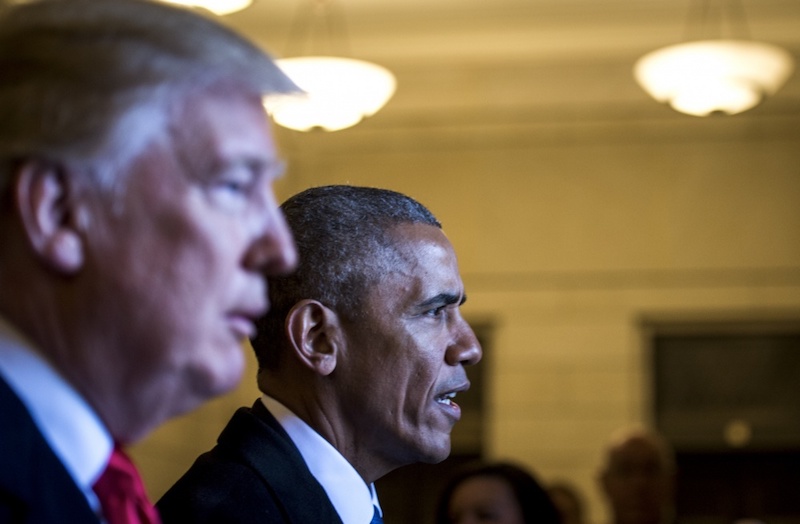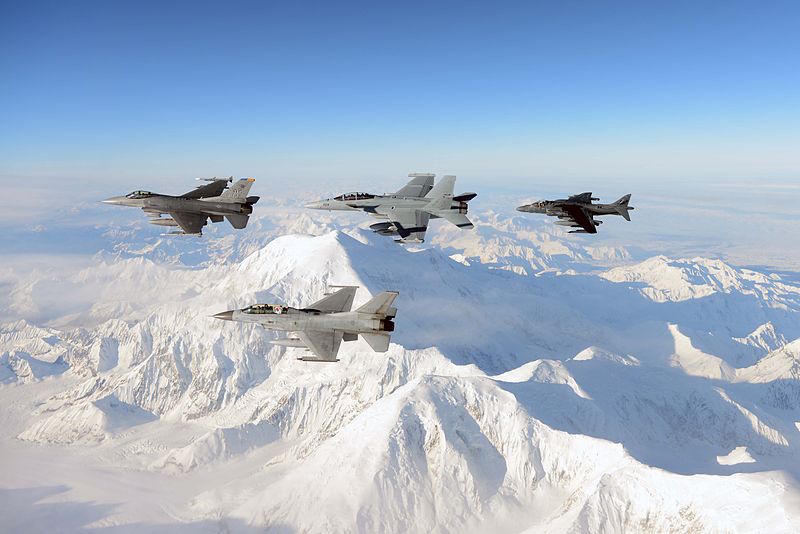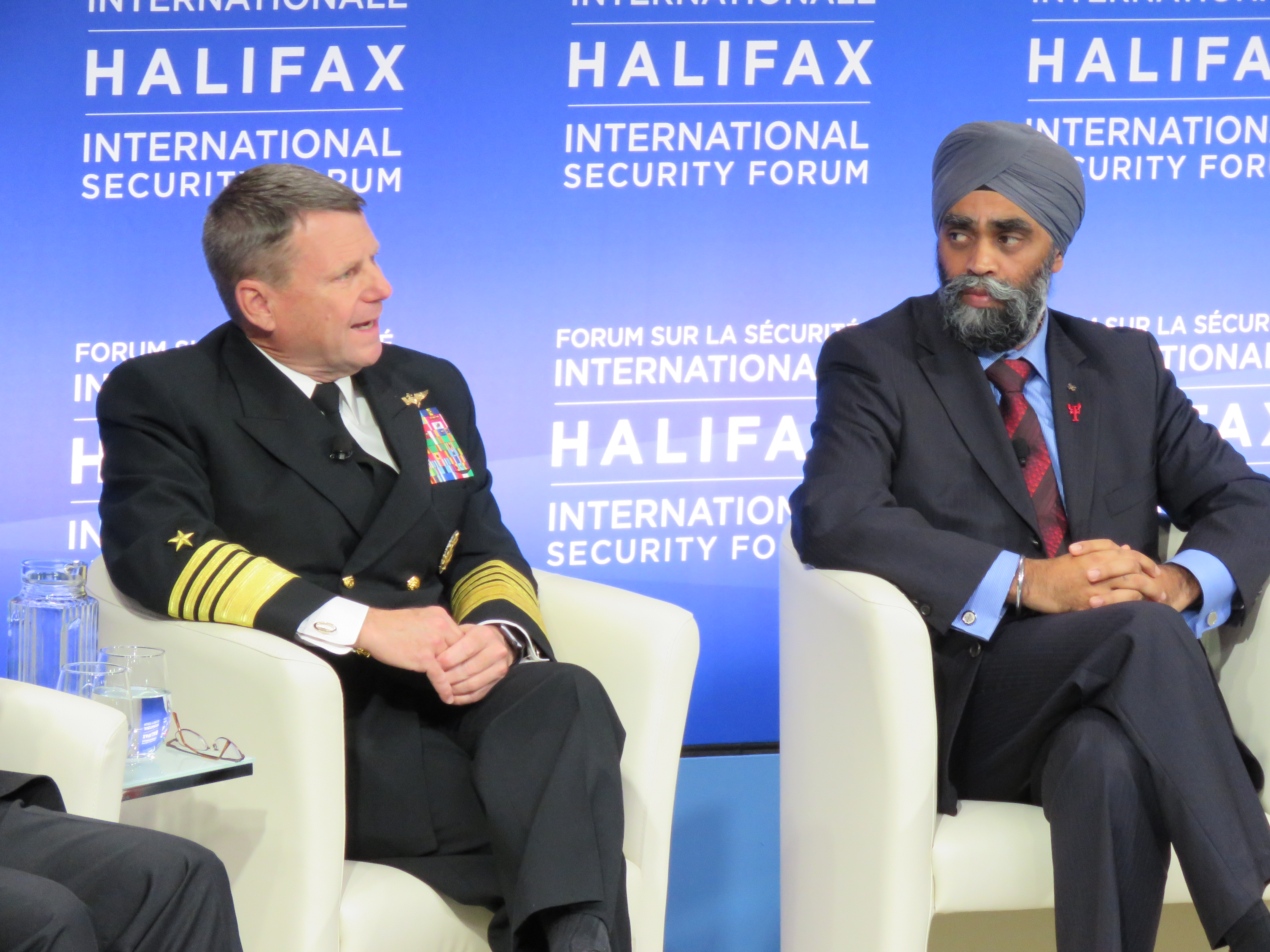Obama’s final speech to NATO came in Warsaw 2016 after the Warsaw Summit had concluded. The speech’s length, around 12 minutes, was roughly similar to the length of Trump’s speech, but the similarities quickly end here. Despite addressing some common topics, the manner in which each President decided to address these topics draws attention to the 5 most interesting differences between Obama and Trump’s speech.
1) Commitment to NATO
Obama devoted time to address “what will never change” by reaffirming America’s “unwavering commitment” to Article 5. A symbolic reference was also made to the 100th anniversary, at the time, of American troops first landing in Europe during World War I.
The White House site included in its title that Trump’s remarks took place at the “unveiling of the…Article 5 memorials”. Unlike Obama, Trump, in his inaugural NATO address as President, declined devoting time to directly reference Article 5 or America’s commitment to it. Recognizing allies “responded swiftly and decisively” with invoking Article 5, Trump made no allusion to reciprocation. Instead, right before the end, Trump mentioned never “forsak[ing]” the “friends” who supported America.
2) Russia
Russia’s activities since the annexation of Crimea in 2014 have only heightened tensions between NATO and Russia. Obama maintained NATO’s traditional position of ‘no business as usual’ with Russia and referred to Russia as a ‘violator’ of sovereignty. Specific references were made to Russia’s Minsk obligations and the necessity of upholding those commitments prior to a rapprochement.
Trump’s treatment of Russia must have unnerved NATO allies by what was not said as much as what was. Trump made only a single fleeting reference to Russia by calling it a “threat” that the NATO “of the future” should focus on, along with NATO’s eastern and southern borders. Even this reference was not dedicated in its entirety to Russia. Trump did not single out Russia in the way Obama did. Importantly, Trump avoided mentioning Russian transgressions by calling it a ‘threat’ instead of a ‘violator’.
It is clear Trump’s treatment of Russia deviated greatly from both NATO’s and Obama’s.
3) Defence Spending
Given how much attention Trump has drawn to ally contributions, before and after the speech, it was unsurprising to see Trump dedicate a decent portion of his speech on burden sharing. Once again, differences manifested in how sentiments relating to defence spending were expressed.
Obama left the issue of defence spending as the last on the agenda and amiably introduced the issue by an optimistic allusion to the end of a collective decline in NATO defence spending. Obama commended the five nations- including America- who did meet the 2% mark by name, while stating a “majority” of nations are not “hitting” that 2% mark. Encouragement towards reaching that goal was eloquently expressed through the phrase “everybody has got to do better”.
Trump excoriated NATO allies on spending while achieving the almost extra-ordinary feat of ostensibly blaming 23 NATO states for the recent attacks in Manchester. Instead of naming the allies who have been ‘hitting’ that 2% mark, Trump opted for numbering the allies that don’t.
Trump’s emphasis on terrorism, and NATO’s planned future of focusing on it, gave the impression that penurious allies who have been “chronically” underspending are the reason why terrorism exists. Trump’s connection of defense spending with terrorism as a threat that NATO should defend against encourages the notion that, were there not a shortage in defense spending, NATO would be able to effectively combat terrorism, and therefore it would not happen. Doubts vanished upon Trump stating that if NATO members met the 2% then NATO would be “even stronger…especially from the threat of terrorism”. Insinuating such a thing requires a fundamental ignorance of terrorism; but, if NATO members do somehow all reach the 2% mark they should not expect the disappearance of terrorism to accompany them.
4) Deterrence
Divine intervention or prudent policy allowed America’s deterrence posture to become the sole area where Obama and Trump agreed. Obama reassuringly referenced strengthening NATO’s defense and deterrence posture, increasing readiness, and connecting that with “enhancing” America’s forward presence on the Eastern flank.
Trump, in less detail, allowed himself a digression from his three running themes of defense spending, terrorism, and immigration, to mention America’s readiness. Just like Russia, which formed only a part and not the point of a single statement, Trump referred to readiness in a negative manner connected to defense spending. While readiness did not deserve a sentence unto itself, the mention of needing to improve it allows for the possibility of updating NATO’s deterrence posture and therein lies some agreement.
5) Migration
Obama specifically noted increasing Alliance support for EU naval missions seeking to protect “desperate” migrants. Obama’s other mention of migration linked it with “testing” European economies. Trump, in the sentence after mentioning the ‘horrors’ of Manchester, declared thousands of people are entering and spreading throughout countries, and often “we have no idea who they are”.
Both Obama and Trump are correct in pointing out certain dangers associated with migration in general but the differences between them are revealed in which aspects each chose to emphasize throughout the speech.
Photo: U.S. President Donald J. Trump and Former U.S. President Barack Obama exit the capitol for the departure ceremony during the 58th Presidential Inauguration in Washington, D.C., Jan. 20 (2017) via Department of Defense
Disclaimer: Any views or opinions expressed in articles are solely those of the authors and do not necessarily represent the views of the NATO Association of Canada.




